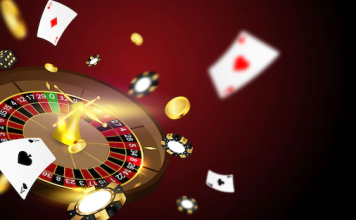There are various definitions for reinforcement learning. But, reinforcement pertains to a highly unique process in evolutionary psychology. Specifically, reinforcement denotes whether the outcome of an activity enhances or reduces the probability of that activity occurring again. For example instagram marketing strategies are designed in such a way that it again and again increases our tendency to explore the app. The reinforcement value of these social media is very high due to which, people especially students engage over and over in using these apps. .how to promote your business on social media,
How to incorporate reinforcement in the classroom?
As a result, reinforcement has significance in the classrooms and that can be an effective behavioural modification strategy. Reinforcement could be used to promote learning or behaviours that will help the learner and also that the teacher hopes to see more frequently in the classroom. Teachers who improve their ability to reinforce behaviour can make the activities more efficient and promote more of the behaviours they want to have in their students.
First and foremost, teachers must determine what is valuable to their students. Reinforcement is only effective if the method utilised actually reinforces the behaviour and promotes further repetition. its very easy to predict that the obvious reinforcer for an app developer would be on how to promote your business on social media platforms. However, it is not the same case with students, they all share different attributes and thus their reinforcers are different. Educators can emphasise what the pupil is doing once this is completed. This necessitates the teacher becoming acquainted with their pupils and creating an atmosphere wherein teachers and students have a close connection.
The finest reinforcers are ones that are tailored to the child ’s needs and have personal significance. However, this isn’t always feasible for all teachers. While some studies propose creating individually tailored questionnaires for each student, most instructors already have a lot on their plates, from planning instructional strategies to communicating with parents and managing various forms of paperwork. Teachers can still develop a broad survey with an unstructured response section for students to share information about themselves and their values.
Second, teachers should make contact with the parents of that pupil. Even brief chats can disclose the student’s reactions. Parents are better positioned than teachers to recognize what their children want or like, and interaction can aid in identifying strategies to reinforce learning in the classroom.
Stages of Reinforcement
According to experts, reinforcement should also be changed with time. In other words, from the first time a behaviour is reinforced to behaviour that occurs much later in the academic year, the way it is reinforced should alter. The first rule of rewarding behaviour is that if a behaviour is to be rewarded, it should be rewarded as soon as possible after the behaviour is completed. There ought to be a short amount of time between when a pupil learns a behaviour and when they receive their reward, to promote a link between the conduct and the incentive. The stronger the link between a behaviour and a reward, the less probable it is that the behaviour will be repeated.
Teachers can also combine the incentive with constructive feedback as an additional reinforcer. This makes the praise more motivating and encourages repeat behaviour by associating it with the incentive and giving it value as a reinforcer. Teachers should monitor if their incentives are working to drive repeat of a behaviour over time. It’s likely that kids will get desensitised to the incentive over time. They begin to react less intensely and become less likely to imitate the action. When this occurs, the instructor must begin to alter the methods in which students are rewarded. The first method of altering the incentives systems is to use the notion of deprivation.
Teachers use deprivation to take away the complete benefit from the learner. This may eventually encourage the learner to resume showing the behaviour in order to be rewarded. Teachers can also dissuade students from engaging in activities simply for the purpose of receiving an incentive by chaining numerous behaviours together before rewarding them. As a result, the student is less likely to identify the prize with a specific behaviour. Instead, kids will identify a succession of behaviours with a reward, rather than expecting a reward for any single behaviour. Before the incentive is provided, a teacher can ask for three separate behaviours to be fulfilled.





